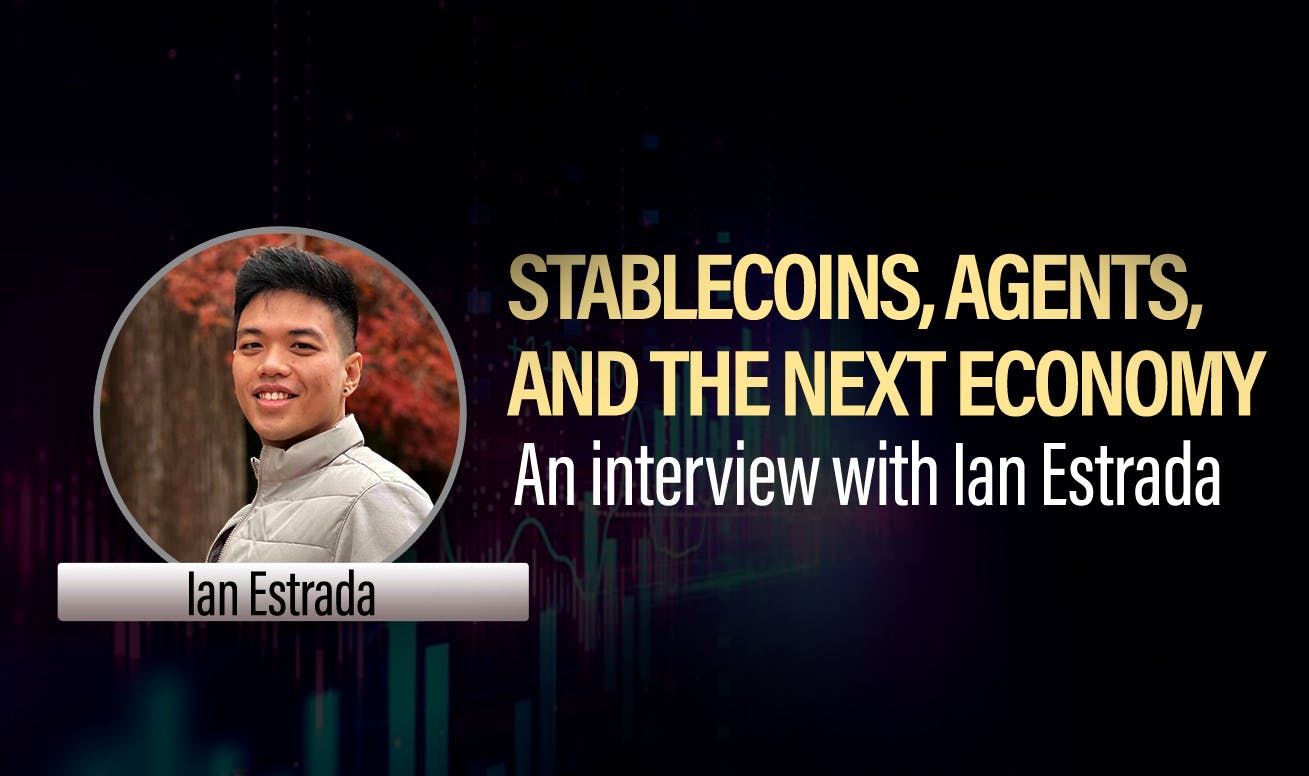The digital currency landscape is showing no signs of slowing down. Thousands of new coin projects are launched annually, but around 90% fail to make the cut and fall down the gaping pit of obscurity. From top players like Vitalik Buterin to quieter innovators, it’s the persistent minds who keep reimagining how value moves—whether through code or AI.
Ian Estrada, the Co-founder and CEO of The MATRIX AI and X Network, is among such forward-thinking leaders of the digital currency economy. Formerly a part of GCash and Global Telecom, Estrada has extensive experience in effective innovation. From DeFi, payments and fintech, he has traversed the disruptive side of blockchain technology and made a name for himself.
The advent of AI has accelerated the digital economy, and all discussions regarding the future are incomplete without the mention of this tour de force of tech. According to Estrada, the future of the store of value will be decided by humans and AI agents, which are a big part of the decision-making process now.
He has worked on both sides of this divide and recently sat down to share his two bits regarding the future. The wild possibilities of the future are explored by the innovative business leader in this interaction.
Ade: You’ve built payment systems at GCash—what’s the one thing traditional finance taught you that crypto still hasn’t figured out?
Ian Estrada: The most critical lesson from traditional finance is the importance of user experience and seamless integration. Traditional systems like GCash prioritize simplicity and trust, which allows for mass adoption. Crypto, on the other hand, still struggles with onboarding, compliance, and intuitive interfaces. Until the crypto space builds infrastructure that is as frictionless and secure as traditional finance, mainstream adoption will remain a challenge.
For example, one of the things that drove growth in one of my early products, Instaloan, saw 40,000 loan applications in an hour after its soft launch because we created a simple 3-page digital application form, making sure that we only included fields that were a high indicator of creditworthiness.
In crypto, if we take the example of an onboarding process, the process tends to be intimidating and confusing without someone directly guiding you through. Since users tend to be more used to centralized products, being exposed to decentralized concepts (e.g. seed phrases, private keys, signing & approving transactions) is overwhelming.
There are many other parts of the user experience that can be optimized – RPC configuration, account management, checking and adding token contracts to your wallet, and many more. Again, crypto is decentralized, so we cannot completely streamline the experience but UX needs to be improved a bit more for the general users to be more comfortable to participate in crypto.
Ade: AI’s exploding, but DeFi’s not keeping up. What’s the biggest mismatch you see between these worlds right now?
Ian Estrada: DeFi was built for human actors, not autonomous AI agents. DeFi needs to evolve to serve the underlying needs of not just AI technology but also its economic ecosystems. There will need to be new models and mechanics that the growing AI sector needs, which current DeFi protocols do not have.
Some key components:
- Lack of AI token utility – most AI agent tokens launched right now have no actual token utility. They are basically memecoins.
- Token price instability – because there is a lack of token utility, their price tends to be unstable.
- Integration into AI agent frameworks – smart contracts of protocols will also need to be updated to enable transactions by AI agents (which poses its own challenges like ensuring security).
My personal opinion is that the previous generation of DeFi projects has not yet fully embraced AI, so it will take time for the current DeFi protocols to catch up.
Ade: You’ve said stablecoin tech might be 4-5 years from takeoff. What’s holding it back—tech, markets, or something else?
Ian Estrada: It is simple – there needs to be more stablecoins circulating across more wallets. If you look at how fintech products grew in the past, mobile wallets as an example, they needed to have enough users and enough merchants having fiat in their wallets. I believe it’s the same thing – the more users (individual and institutional) have stablecoins, then the technology will follow.
Ade: You’ve pushed for OTC desks to get stablecoins in people’s hands. Why’s that the missing piece, and who’s dropping the ball?
Ian Estrada: I view OTC desks as distribution channels. Related to my earlier point, they are a critical channel for more users to acquire stablecoin. The more OTC desks there are, the more access to stablecoins, and the greater the adoption.
However, there’s not much focus on creating more OTC desks globally, other than buying them from large institutions. I think the challenge here is regulation (regulators may choose to create high requirements to set up a legitimate one) and a lack of entrepreneurs who have both payment and crypto experience to create them.
Ade: New York’s new bill under Trump’s watch aims to criminalise crypto fraud like rug pulls. How do you see this shaping the stablecoin space?
Ian Estrada: Regulatory action is inevitable and I am in support of criminalizing rug pulls. However, the big question is policy – how are rug pulls defined versus a natural market correction in an industry where negative 50-90% is the norm? Since most rug pulls happen on-chain, how will they capture the bad actor executing it?
From a stablecoin perspective, I do not think they will be affected much. USDT and USDC are closely monitored by the US regulators. They are also the primary US dollar-denominated digital asset in circulation, with an 88.5% dominance, so I believe that they will be a secondary line of defense. The primary line of defense would be to make sure that law enforcement works effectively with centralized exchanges if bad actors choose to use them to off-ramp stolen funds.
Ade: Crypto’s a wild ride—how do you design stable systems when token prices won’t sit still?
Ian Estrada: At its core, stability comes from managing buy and sell pressure. The market always has ups and downs – the key is how to create incentives to increase buy pressure and mechanisms to reduce sell pressure. AI token-backed stablecoins are one solution to this. By locking tokens to mint stablecoins, it introduces a layer of stability for crypto AI.
This principle is not new; we have multiple examples of mechanics that wrap native assets into derivative assets that end up managing sell pressure – Collateralized Debt Positions (popularized by MakerDAO), voting-escrowed tokens (popularized by Curve Finance), and liquid staking (popularized by Lido Finance). Instead of using or trading the native asset, a user instead uses a derivative asset to trade or conduct DeFi transactions, effectively making the derivative asset volatile instead of the underlying native asset.
Ade: Imagine an AI agent paying for compute or services—what’s the one financial tool it needs?
Ian Estrada: An intelligent stablecoin that can autonomously manage payments, access liquidity pools, and handle cross-chain settlements, is one. AI infrastructure projects usually require their own native token as a form of payment, which exposes all the participants (demand and supply-side) to volatility. An intelligent stablecoin removes volatility exposure as it automatically stabilizes itself to ensure it maintains the peg, which is important for financial sustainability.
Ade: By 2030, what’s the craziest way you think AI and stablecoins could rewrite how we trade value—human or machine?
Ian Estrada: I imagine a world where no user no longer needs to actually touch their stablecoins. They can tell their agent to buy a pizza, book a cab, or pay someone. I think that’s really cool.
My vision is simple, but for us to get to that point, there are a lot of things that need to be done. I imagine that payment companies need to be integrated into agents and need to support crypto assets and fiat; each of the different apps will need to be integrated with crypto wallets; there also must be AI agents that can interact with the different services. Those are just some preliminary thoughts, but it gets me excited.









